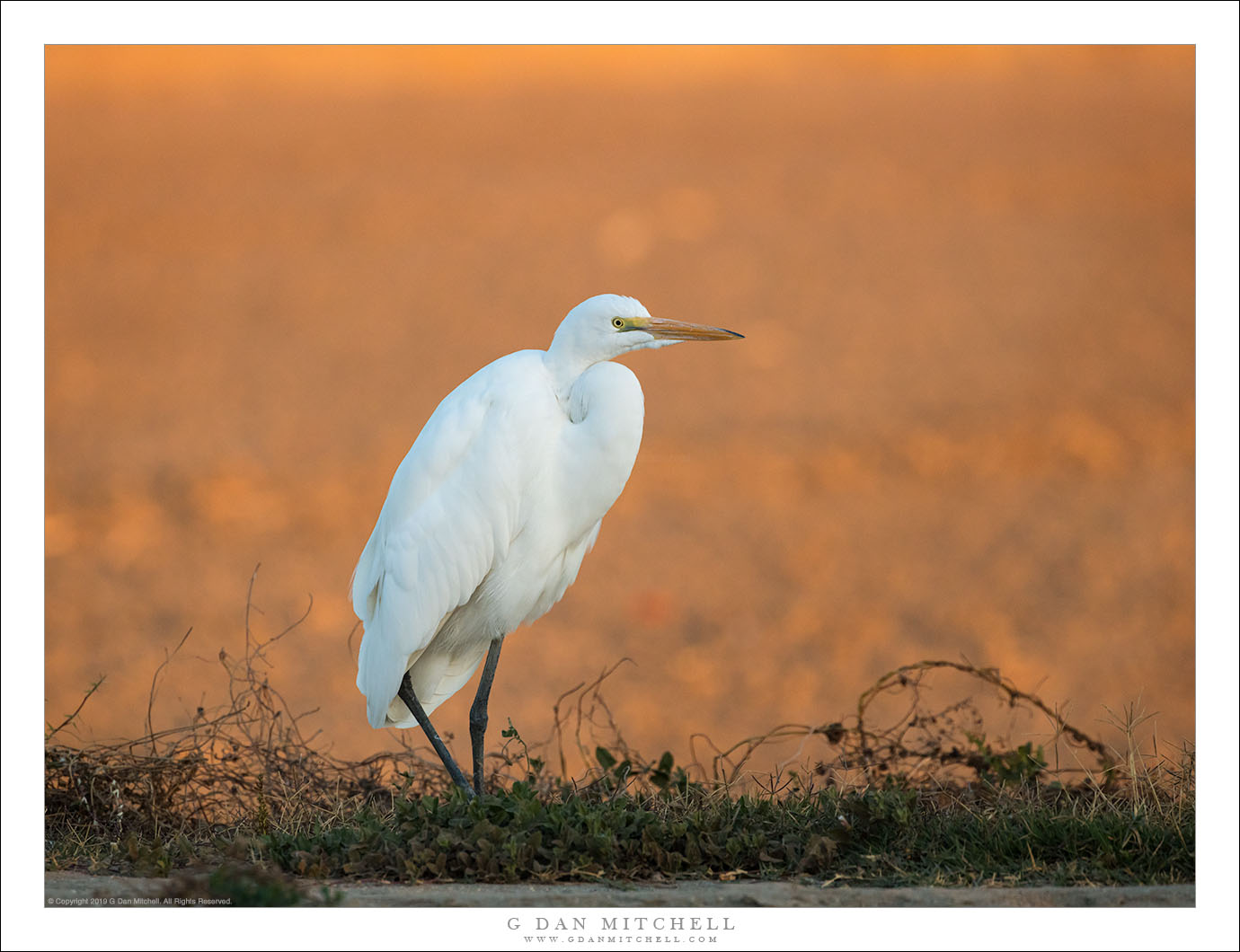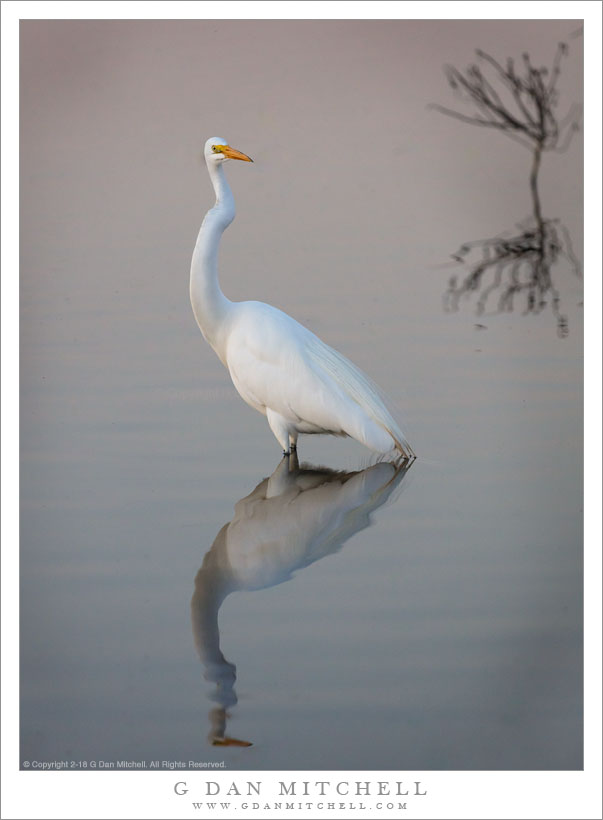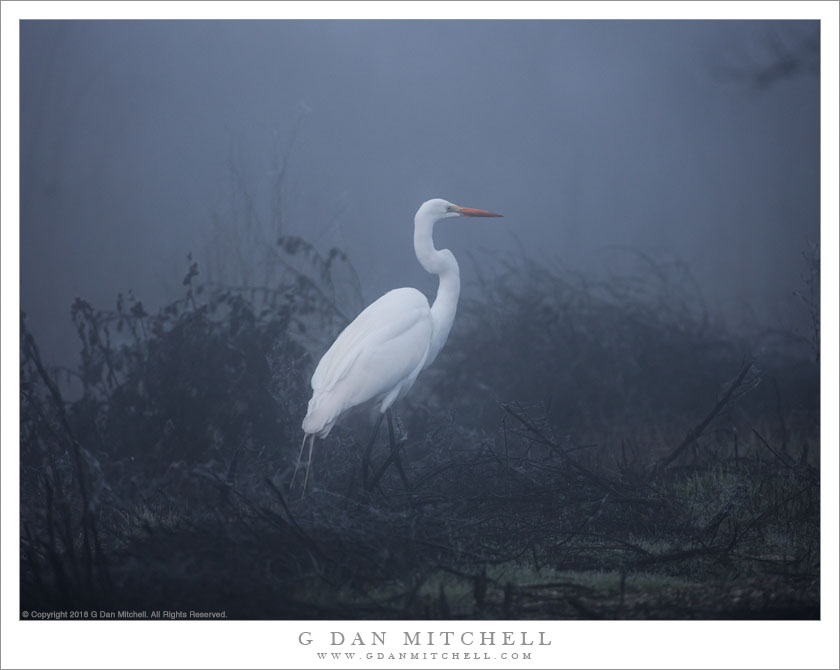
Great Egret, Morning Light. © Copyright 2019 G Dan Mitchell – all rights reserved.
A great egret in California’s Central Valley.
Way back when I was a college student I first “discovered” egrets. I was in a general education science course that consisted of a sequence of short seminars on various subjects, and the professor teaching one on ecology was obviously an egret fanatic. I don’t recall many specifics from the course, but I recall his passion for “snowy egrets.” Later on, as a dedicated cyclist, I often rode past creeks and canals in the Bay Area where I spotted great egrets (not the same critter as the snowy egret), often simply resting but sometimes in flight. At that time I regarded them as exotic birds, since they were still new to me.
Of course, I eventually learned that they are all over California, wherever there are wetlands — from the Pacific shoreline to the Central Valley. As I learned more about other birds — cranes, geese, herons, ibises — I came to regard the egret as a much less exotic bird. Yet, there is nothing quite like the flight of a great egret, with that long neck, the pure white plumage, and the gigantic wingspan. This one managed to stay put on the ground long enough for me to take its picture on a recent, first-of-the-season bird photography foray into the Central Valley.
G Dan Mitchell is a California photographer and visual opportunist. His book, “California’s Fall Color: A Photographer’s Guide to Autumn in the Sierra” is available from Heyday Books and Amazon.
Blog | About | Flickr | Facebook | Email
Links to Articles, Sales and Licensing, my Sierra Nevada Fall Color book, Contact Information.
All media © Copyright G Dan Mitchell and others as indicated. Any use requires advance permission from G Dan Mitchell.




